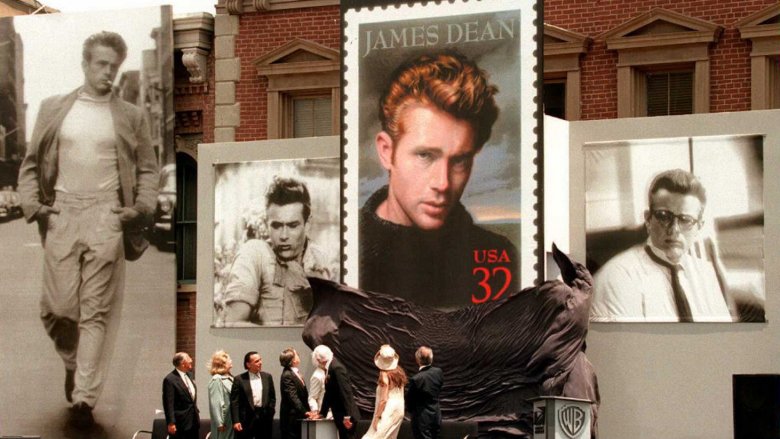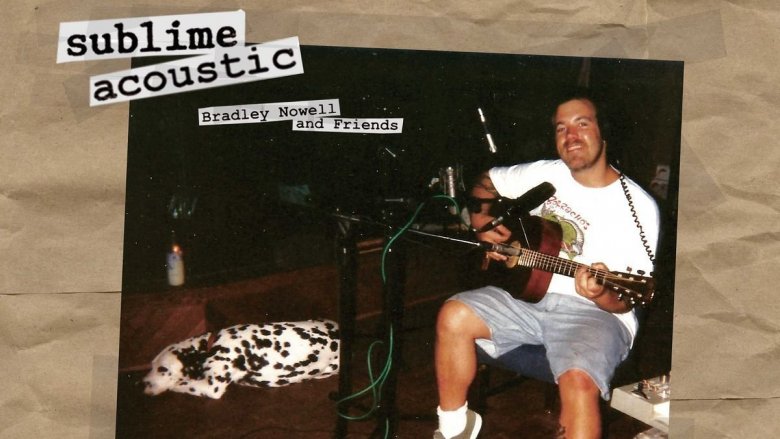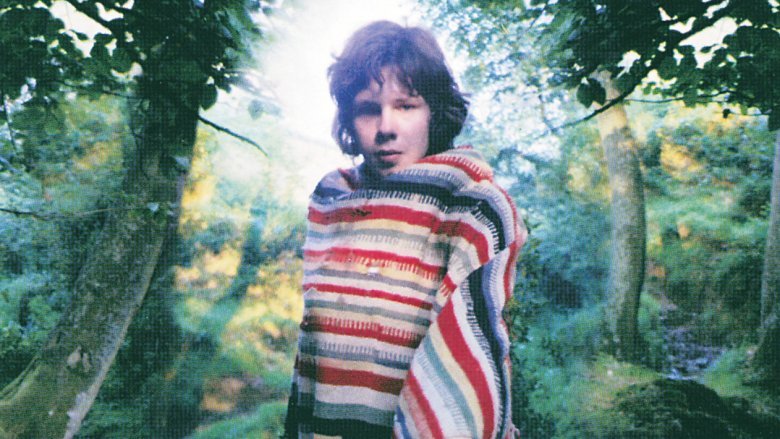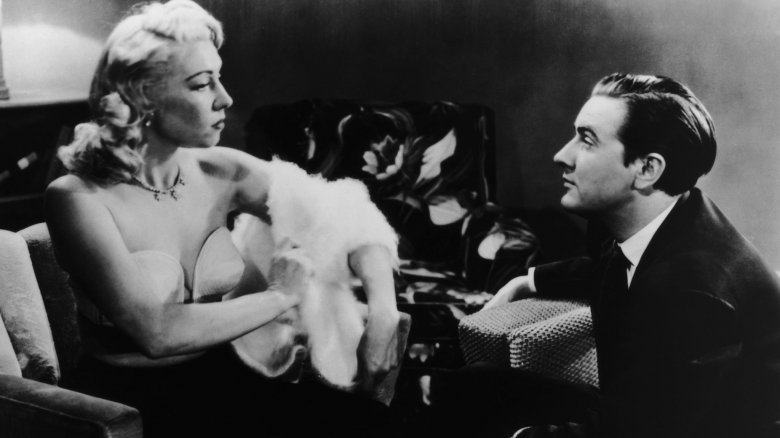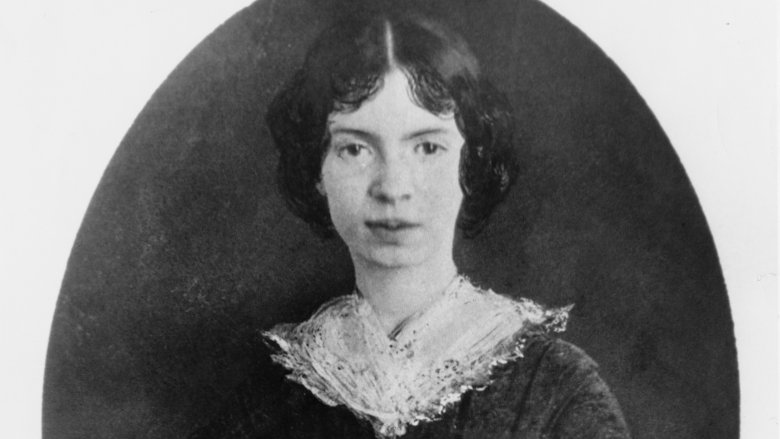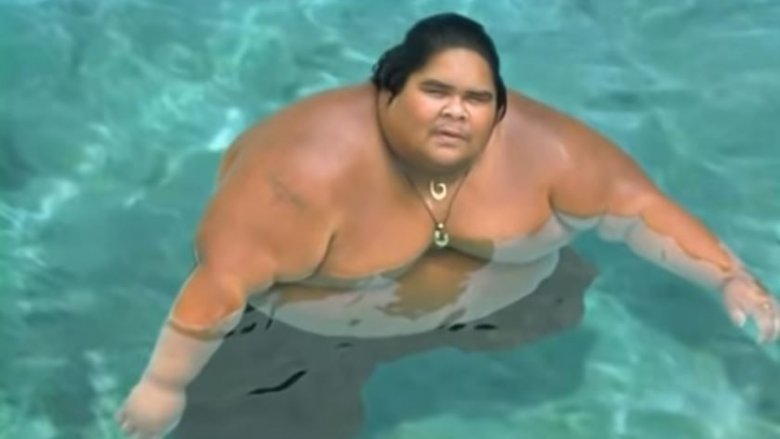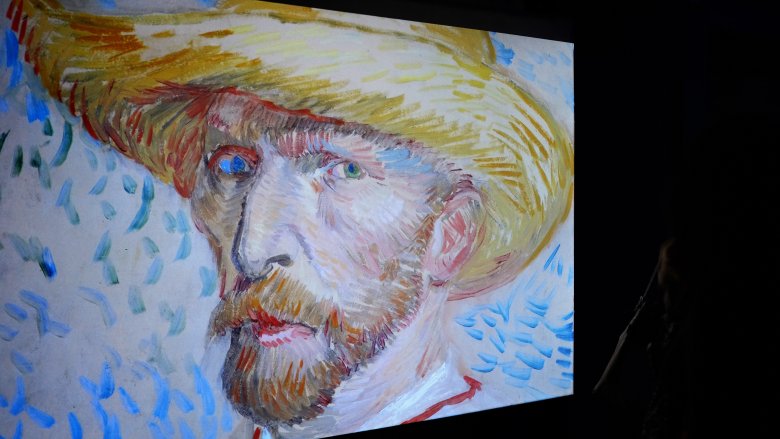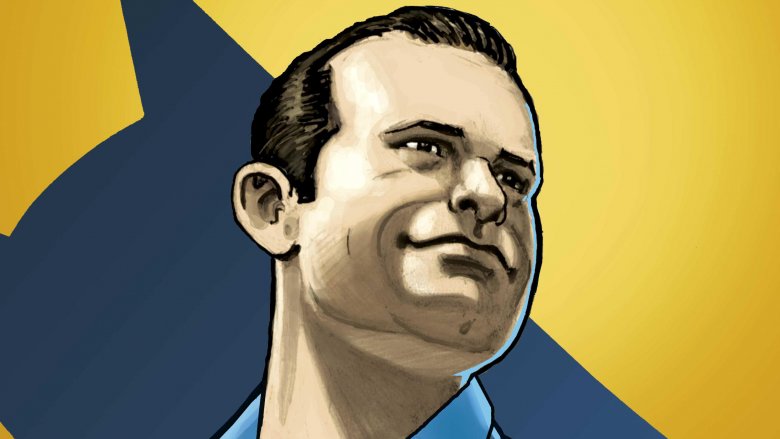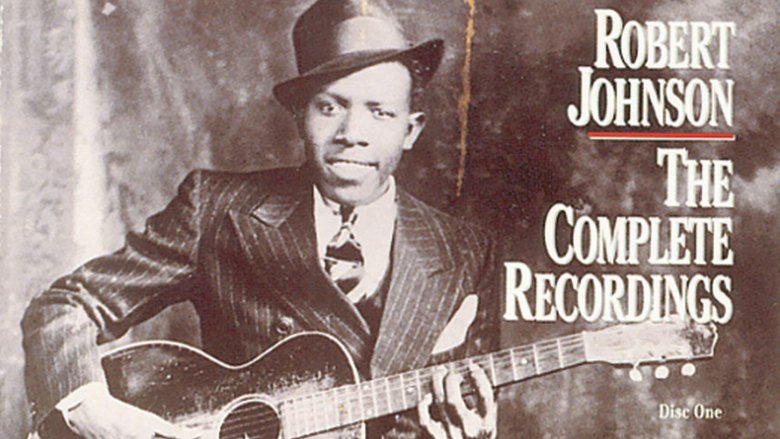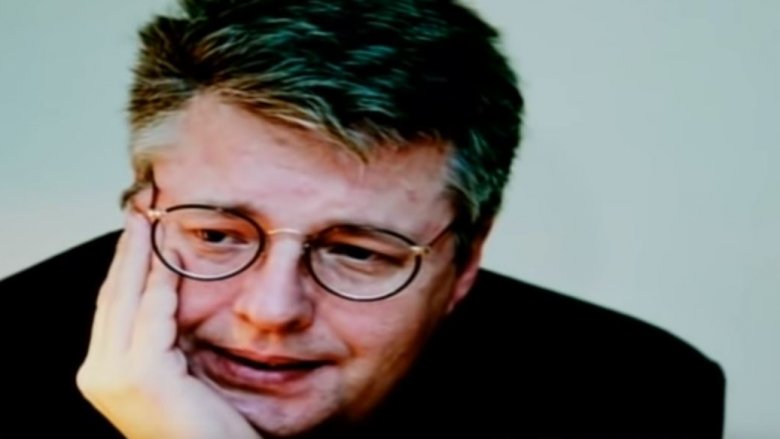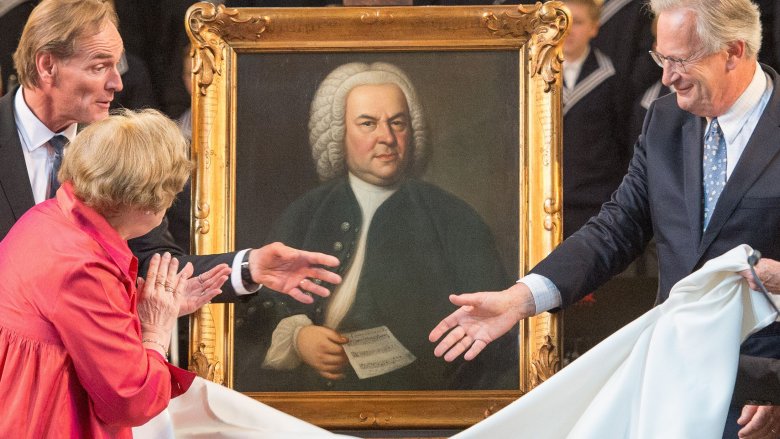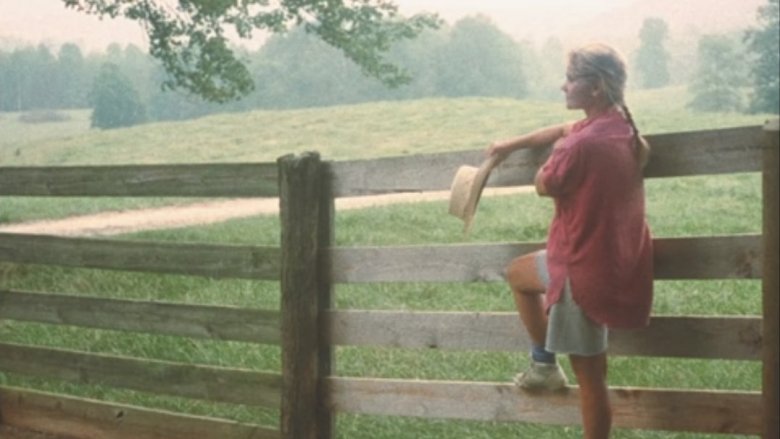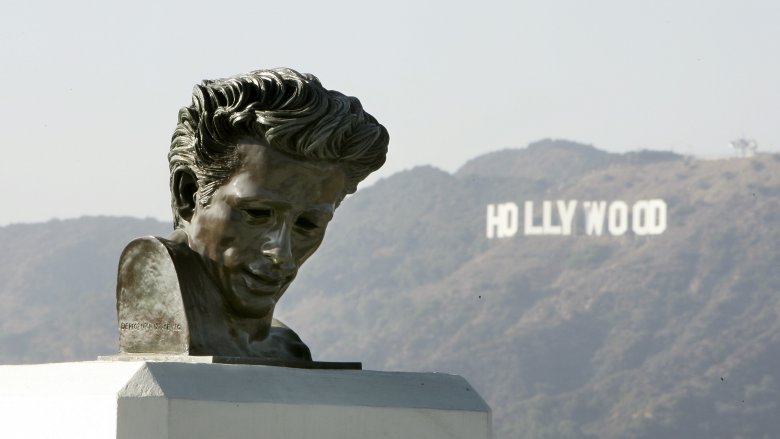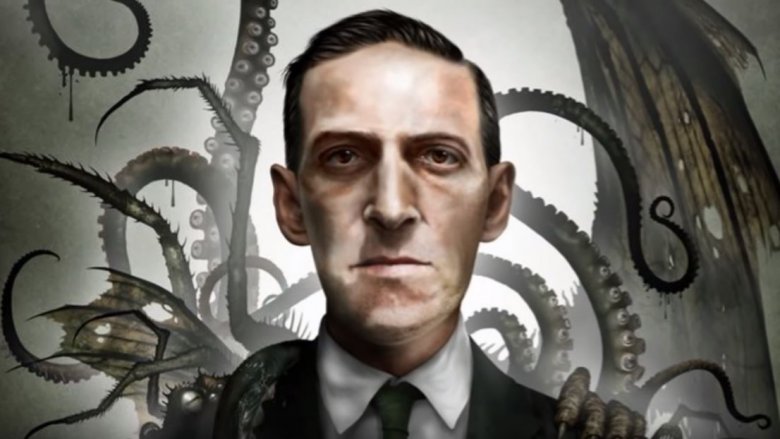These Celebs Only Became Popular After They Died
Fame is a strange thing. Some people spend their whole lives seeking it, and never get there. Others are thrust into the spotlight accidentally, whether due to tragedy, lottery winnings, or an embarrassing internet meme. Even when someone does get the widespread acclaim they desire, the impact on their life isn't always so great. As any famous person will tell you, having the spotlight aimed at your face too long can get you pretty hot and sweaty.
On the other hand, there's a surprising number of big name figures from all throughout history — including artists, directors, writers, and more — who never got an ounce of recognition when they were alive, but somehow hit the big leagues after death. Sometimes, their work just took a little too long to gather mainstream attention. Other times, tragedy struck. Then there are the ones who actually kept their work hidden away, to the point of death, until some family member gave it to the world. Whatever the case, each of these cases of posthumous acclaim is fascinating in its own way.
Bradley Nowell died right before Sublime went big
"Early in the morning, risin' to the street..."
Love 'em or hate 'em, every Millennial knows Sublime. Every guitar player out there has been asked to play "What I Got" at a party at least once, to the point where it's hard to imagine a musical landscape where Bradley Nowell's band wasn't a household name. Bizarrely enough, Nowell himself never got to see how successful Sublime would become.
According to Rolling Stone, the album that put them on the map, titled Sublime, was released two months after Nowell died from a heroin overdose in his San Francisco motel room. This marked the end of a long history of drug use — at times, Nowell had even hocked the band's instruments to pay for his habit — but the beginning of Sublime as a big name, even though the band wasn't really a band anymore. As Sublime manager Jason Westfall once said, "Sublime died when Brad died."
When Nowell died, he left behind his wife of seven days, Troy, as well as an 11-month-old son and his famous dog Louie (or "Lou Dog") the dalmatian. Louie was reportedly at the foot of Nowell's bed when he died, according to OC Weekly, and finally passed away of old age in 2001.
How a car commercial introduced people to Nick Drake
In 1974, when artist Nick Drake died from overdosing on antidepressants, he was only 26 years old and his music was obscure. According to PBS, his album Pink Moon (released in 1972) was a total bomb. Drake never found the captive audience he deserved, though in the decades following his death, a small but dedicated fan base grew over time.
Then, in the 1990s, a man named Cally Callomon joined up with Island Records. Seeing the potential for Nick Drake's music to reach a wider audience, Callomon marketed Drake as if he were a living artist, instead of a dead one, by putting out new releases like Way To Blue: An Introduction To Nick Drake. According to Quartz, the rather odd turning point came in 1999, when Drake's song "Pink Moon" — the title track of the previously failed album from 1972 — was played in a Volkswagen commercial, introducing Drake's music to millions of new listeners for the first time.
If you or anyone you know is having suicidal thoughts, please call the National Suicide Prevention Lifeline at 1-800-273-TALK (8255).
Until he died, no one knew he was the "worst director ever"
If you travel in B-movie circles, you know that the name Ed Wood has reached almost messianic heights of reverence. Today, Wood's film Plan 9 From Outer Space is often panned as being the worst cinematic offering ever put to film (yeah, right... have you ever seen zany nonsense like Santa Claus Conquers the Martians?), but it might surprise many film lovers to know that Wood didn't receive any such vitriol when he was alive. For the most part, nobody knew he existed.
According to Den of Geek, Wood's not-so-favorable title of "worst director of all-time" was first nastily bestowed upon him by author Michael Medved in the book The Golden Turkey Awards, released in 1980... two years after Wood's death. While Medved's portrayal of Wood was mean-spirited, it did accidentally lead to Wood becoming a beloved cult figure, as people went back and watched his quirky films with newfound fascination. Wood's reputation was finally redeemed to the public at large in 1994, according to The Vintage News, thanks to Tim Burton's loving portrayal in the movie Ed Wood.
From debt to posthumous success
Nowadays, music lovers all over the world know Jeff Buckley. When the young artist died, however, he'd only completed one studio LP, a bunch of live shows, and his small (but devoted) following was just beginning to sprout. Worst of all, according to The Guardian, his financial woes were pretty severe. Despite signing what should have been a major money-making deal with Sony, Buckley's debt issues were so bad that he couldn't even fund a down payment on a $40,000 fixer-upper house.
It's likely that, had Buckley survived, he would have reached the same levels of fame that he did in death. However, after Buckley's tragic accidental drowning in 1997 — a death eerily foretold in one of his songs — his brand has been used in a near-constant flood of posthumous releases, including live albums, extended versions of songs, and more. Perhaps the song that pops up the most is his distinctive rendition of Leonard Cohen's Hallelujah, according to Diffuser, which has been played on everything from House, M.D. to The OC.
Emily Dickinson never shared her work
By all accounts shy and reclusive, Emily Dickinson began writing when she was a teenager, according to Biography, and truly dove into the art of poetry during the 1850s. However, few people knew about her talent, largely due to her timidity. Dickinson didn't send her works out for publication, usually avoided sharing them with her family members, and by the 1860s, she stopped even leaving home altogether. Though taking care of her ailing mother certainly took up much of her time, it's been theorized that Dickinson may have also lived with depression, agoraphobia, and/or anxiety. According to the Emily Dickinson Museum, it's unclear whether the woman would have wanted her poetry to be shown to the world. She did give some of her works to family and friends, and during her lifetime, a handful of her pieces appeared in newspapers, but they were published anonymously, and almost certainly without her knowledge.
Whatever Dickinson's feelings on publication might've been, the decision was taken away from her when she died in 1886. Upon her demise, her sister Lavina happened upon a chest full of hundreds of unpublished poems. She decided it was time to introduce these works to the world, and eventually turned her late sister into an international literary icon.
Israel Kamakawiwo'ole's "Over the Rainbow"
The song "Over the Rainbow" was originally composed for The Wizard of Oz, and countless artists have done their own takes on it over the years, but perhaps no version is as fondly remembered today as the soulful ukulele rendition performed by Hawaiian artist Israel "Iz" Kamakawiwo'ole.
When Iz died in 1997 at the age of 38, The Guardian says that he was already beloved in Hawaii, not only because of his music, but also due to his advocate work on behalf of native Hawaiian rights and self-determination. At his funeral, 10,000 Hawaiians paid their respects to the local hero. However, it was only after Kamakawiwo'ole's death that his music spread to an international audience, as it was featured in major TV programs like Lost, as well as a posthumous album release, and a viral video which was featured on a then-new YouTube, according to The Times.
The paint wasn't dry on Vincent van Gogh's most famous works
When Vincent van Gogh died in 1890, the world had not yet witnessed the great expressionist's most notable works. It was only in his last few years alive that Van Gogh painted such classic pieces as The Starry Night, Sunflowers, and Portrait of Doctor Gachet, and the Smithsonian says that the thickness of Van Gogh's oil paint style meant that his artwork took an insanely long time to dry — anywhere from one year to 18 months. Yes, really. As a result, Van Gogh had to spend years watching over his prized works, making sure they didn't get stuck together and/or ruined. Stressful, much? As a result, only Van Gogh's friends and family knew how amazing his work was.
When Vincent died, his still-wet paintings were passed down to his brother, Theo. Two months later, Theo also died, leaving his wife Johanna with a baby boy (also named Vincent), two horribly-timed tragedies, and a collection of breathtaking paintings that no one knew about. Luckily for the world, Johanna became an art dealer — not only to honor her dead husband and family, but also to provide for her young son — and it was she, almost single-handedly, who exposed the world to her late brother-in-law's great works.
Say hello to Batman's secret co-creator
From four-colored comics to action figures to cinematic blockbusters, Batman is a major part of pop culture, and since the beginning, Bob Kane has hogged all the credit. Every time you watch a Batman movie, read a Batman comic, or even visit Kane's grave, Kane is given ownership of the character. There's just one, big, Bane-sized problem: the real accolades should go to Kane's collaborator, Bill Finger.
To be fair, Kane did start the creative process. What basically happened, according to Today, was that Kane dreamed up the name Bat-Man, drew a blond dude in red tights and a domino mask (kinda like Robin) and showed his creation to Bill Finger. Finger suggested modifying the costume, and Finger was also the one who wrote the book (Kane was the artist), developed Bruce Wayne's tragic origin story, and created all those classic bad guys like the Joker, Catwoman, and Penguin. Sadly, Kane managed to get credited for everything, for decades, and Finger died in obscurity.
Thankfully, recent years have seen Finger finally gain the recognition he deserves, according to The Boston Globe, thanks to TV specials like the Hulu documentary Batman & Bill. In 2014, there was even an (unsuccessful) campaign to have Finger's birthday recognized in a Google doodle. The landmark moment came in 2016, when the film Batman v Superman: Dawn of Justice finally featured Finger's name in the credits for the first time.
The complex mythology of Robert Johnson
The true story of Robert Johnson is shrouded in myths, particularly the fanciful tale of how he supposedly sold his soul to the devil in exchange for becoming the world's greatest blues musician. That story isn't true, obviously. But even though Johnson has become a legend, his music serving as the chief inspiration for future artists like Keith Richards and Eric Clapton, none of that recognition came until after he died.
While Johnson was alive, according to The Midland Reporter-Telegram, he was just one of that era's hundreds of African American musicians struggling to earn a living by making music in rural Mississippi. NPR points out that Johnson recorded a mere 29 songs in his day, and spent most of his short career busking at street corners and juke joints. That all started to change when his number "Terraplane Blues" became a minor hit, earning him invitations to a second recording session for a new LP and even a Carnegie Hall show. Before he could do either of these things, he was dead, allegedly by poisoning. When Columbia Records did finally put out Johnson's LP, the deceased artist was so mysterious and unknown that they struggled to locate good photographs to place on the cover.
Lisbeth Salander's creator died before publication
Before the 2005 success of The Girl With the Dragon Tattoo (or its original Swedish title Man Som Hatar Kvinnor, or "Men Who Hate Women"), the author, a Swedish journalist named Stieg Larsson, was not particularly well known outside of news circles, according to The New York Times. The release of the Millennium trilogy, featuring cyberpunk heroine Lisbeth Salander, catapulted Larsson onto many lists of top crime writers, even though he'd never written in the genre before. Larsson never got see any of this fame, sadly, because he died in November of 2004.
While it's amazing enough that he wrote three Millennium books before even getting the first one published, he had apparently planned out a ten-book narrative. Interesting as it is to imagine how he might've concluded Salander's story, Larsson died of a heart attack before he could set pen to paper for the last two-thirds of the series. Though only 50 years old, his friends and family seem to agree that he took poor care of his health, habitually chain-smoking with a lack of exercise and a poor diet.
The man who, after death, became a musical titan
As time went on, the music of German composer Johann Sebastian Bach has been hailed like a religion unto itself, but during Bach's actual lifetime, his work was largely disregarded outside of the religious services it was played in. According to Vermont Public Radio, Bach came from a musical family, and most of his contemporaries didn't appreciate the brilliant complexity of his compositions, largely writing him off as old fashioned and out of touch.
After Bach died, though, a few others thought differently. His work went on to be a huge influence on both Beethoven and Mozart, for example. However, the one who truly deserves credit for rescuing Bach from the dust bins of history, according to the U.S. Library of Congress, was composer Felix Mendelssohn, whose enthusiastic appreciation and support for Bach's music led to a revival in the 1800s, and also inspired new works in the same vein.
From the trunk of her car to mainstream success
In death, Eva Cassidy's mesmerizing talent has received widespread acclaim. Her posthumous CD releases have achieved gold-seller status, hit the number one spot, and sold over four million copies, according to The New York Times. In life, though? Cassidy was a shy, reserved figure who disliked having to perform in front of people, even if it was just the small, friendly crowd at a friend's party.
On the instances where Cassidy did put herself out there, she was deeply specific about only singing songs that meant something to her, and sometimes, this led to her bouncing between genres like a ping-pong ball — from jazz to folk to blues, she did it all. Luckily, Cassidy did overcome her self-consciousness long enough to release one solo album during her lifetime, which she financed herself and sold in person from the trunk of her car.
Clearly, marketing wasn't really Cassidy's thing, but singing absolutely was. In the years since her death from melanoma in 1996, little moments have come together to make her a posthumous celebrity, like her version of Sting's "Fields of Gold" being played during the 2002 Olympics.
When Rebel Without a Cause premiered, James Dean was already gone
James Dean was always destined to be a Hollywood icon, but tragically, his life was cut short right before he could see it all come together. In 1955, according to History, the 24-year-old actor was driving his Porsche Spyder (nicknamed "the Little Bastard") through Cholame, California when an intersection traffic accident took his life. By this time, he had put in major performances for the three films that he would forever be known for — East of Eden, Giant, and perhaps most significantly, Rebel Without a Cause — but his accident occurred right before the latter two films could be released, meaning he never got to see how successful they would become.
Though Dean's life was lost, the Academy Awards still saw fit to honor him with two Best Actor nominations, in both 1955 and 1956, according to The Denver Post. Over half a century later, Dean is still cited as a symbol of his era, a fashion icon, and because of his performance in Rebel Without a Cause, the ultimate symbol of teen angst and rebellion, according to The Chicago Tribune.
The sad life, death, rise, and tumbling fall of H.P. Lovecraft
Posthumous fame can be great, but it has its serious downsides, too. Yes, the good stuff comes out, but so does the really awful stuff. Just ask H.P. Lovecraft, who went from zero to (cult) hero to... well, it's messy.
As the Smithsonian reports, Lovecraft lived a short, solitary, and depressed life. Both his parents went to a mental hospital, his family fortune was destroyed by botched inheritance paperwork, and his nights were haunted by horrifying nightmares. His wildly innovative cosmic horror stories — which would one day reshape the entire horror genre — earned him nothing while he was alive. He died sick, unknown, and penniless. In the decades afterward, though, Lovecraft's work became more influential than he ever could've imagined, to the point where the term "Lovecraftian" is even recognized in the dictionary, and the World Fantasy Awards turned his face into a statue.
At first, this sounds like a victorious posthumous legacy, but as the world has gotten to know how fascinating Lovecraft's cosmic horror stories are, it has also become impossible not to see how disgustingly racist he was. Lovecraft's prejudices were deep, sickening, and unfortunately, quite integrated into many of his works. As LitHub chronicles, he was entertained by Hitler, promoted ugly antisemitic conspiracies, and had especially disturbing views toward black people. Not surprisingly, The Verge reported in 2017 that the World Fantasy Awards had made the good call of replacing their Lovecraft busts with a twisted tree statue in light of Lovecraft's toxic views.
